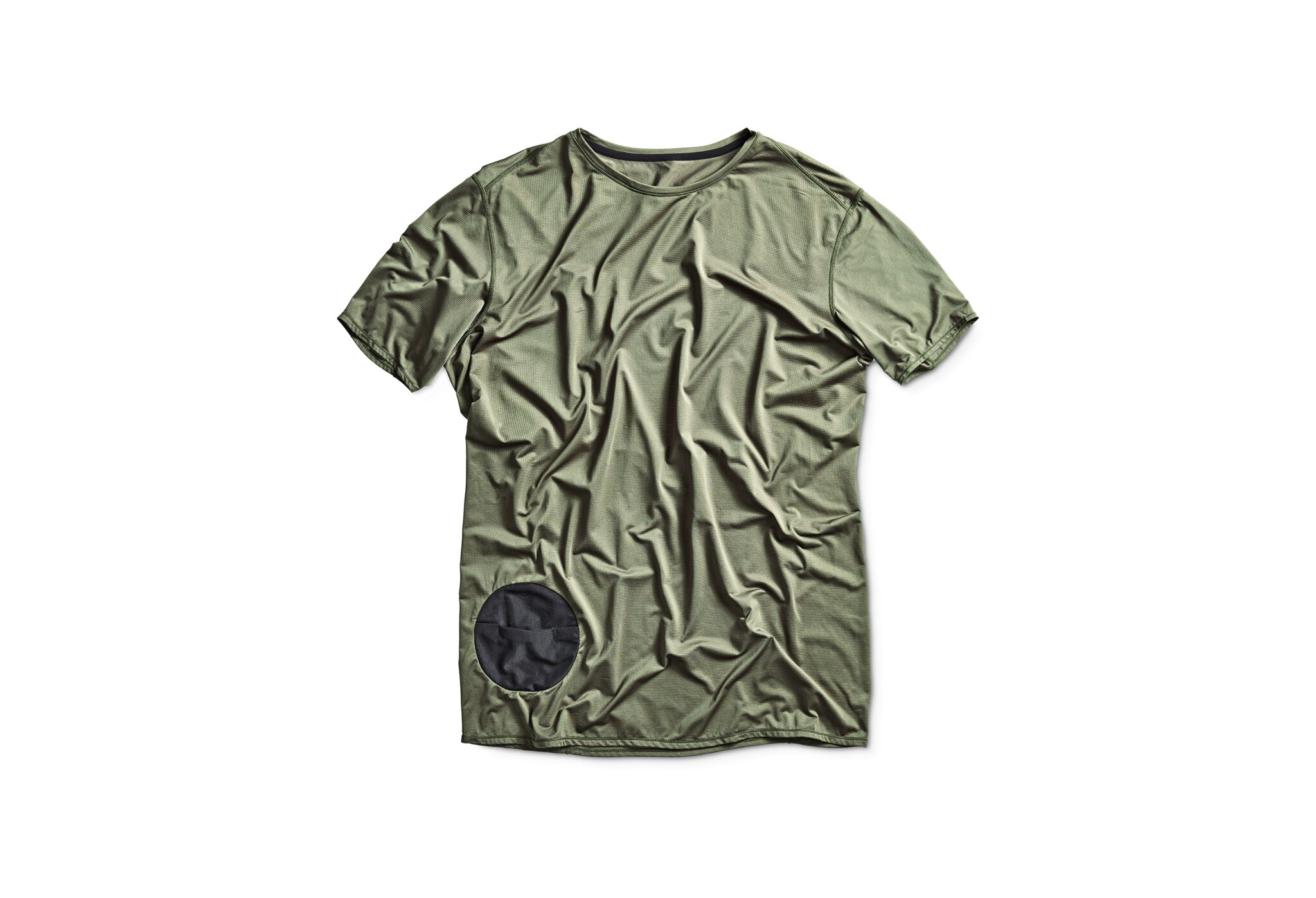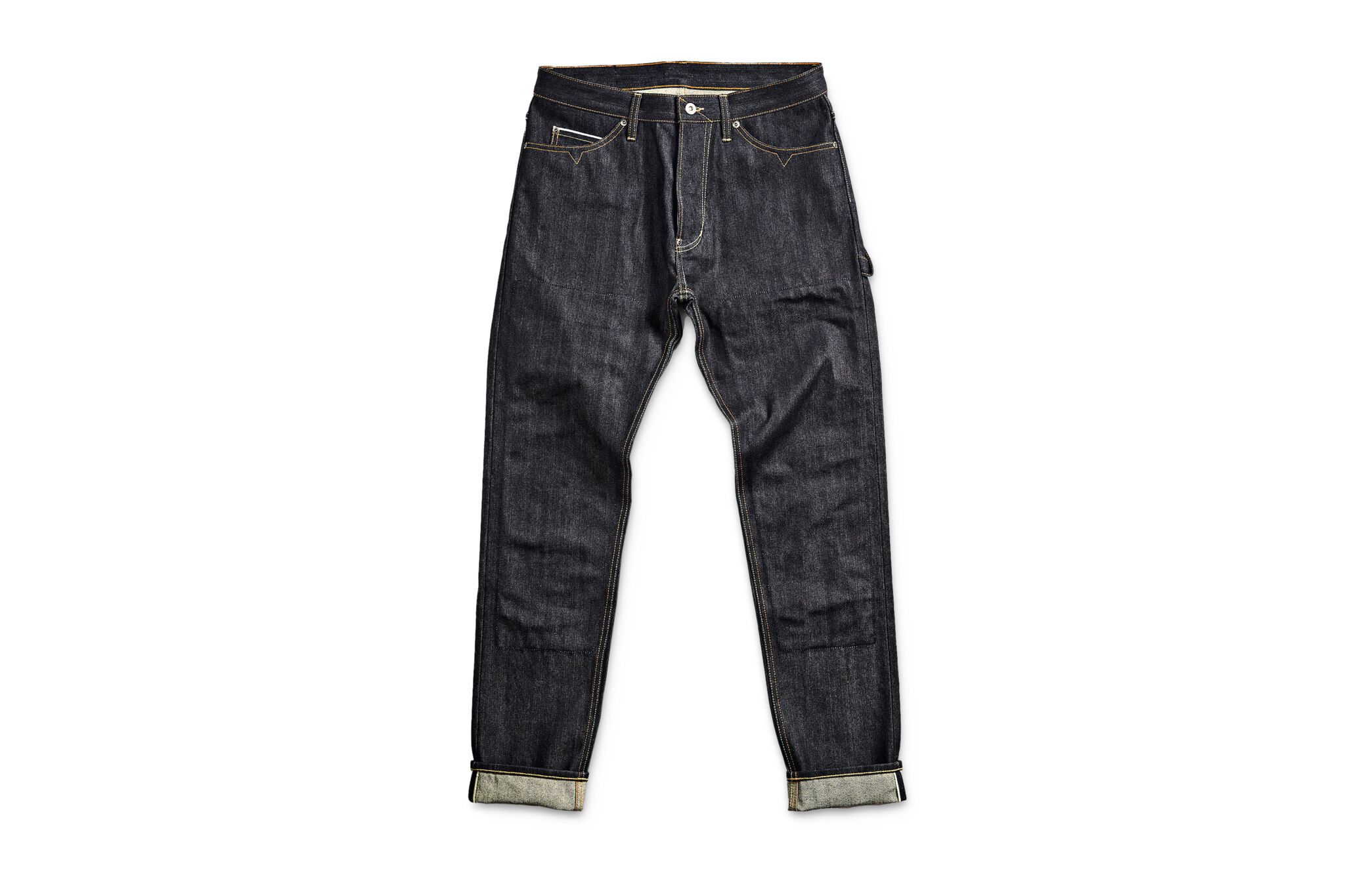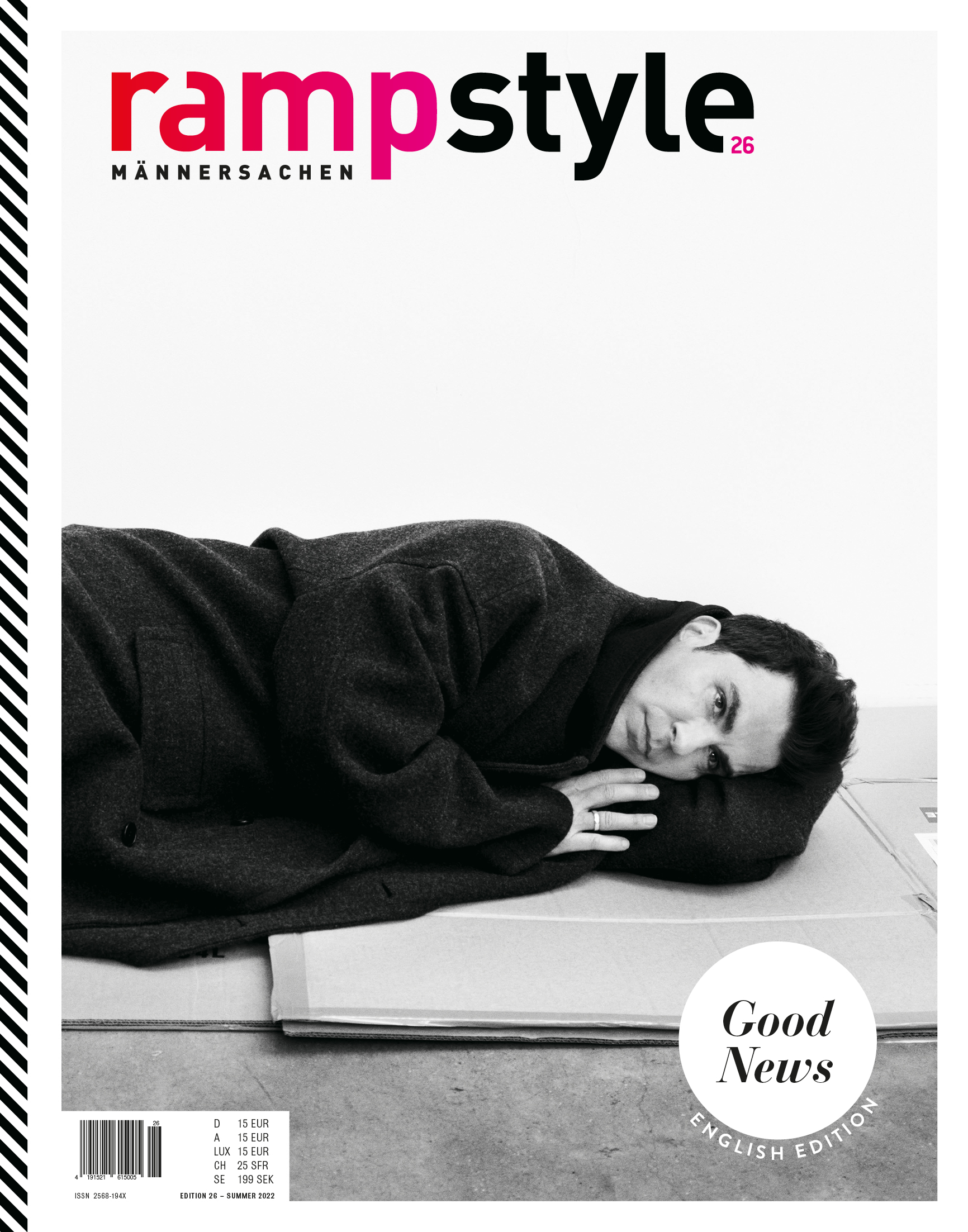Good news! Should the world ever come to an end, the fashion label founded by brothers Steve and Nick Tidball has just the thing: fashion for extreme environments. A conversation with Steve Tidball about billionaires on Mars and the question of what a dog wears at the end of days.
Spoiler:
It’s the Apocalypse Jacket from Vollebak.

Your brand’s tagline is “clothes from the future”. You design special pieces of clothing such as workwear designed for outer space. How did you come up with the idea for such a unique line of clothing?
That really evolved over time. It’s not like we had one crazy lightbulb moment. It actually started relatively slowly. We were doing some very extreme ultra-marathon races across the Namib desert, the Amazon and across the Alps. Our sponsors gave us some clothes, which were quite nice-looking. But we learned that when you put human beings in extreme environments, clothes like that aren’t actually that good for you. You’re basically wearing the same stuff as someone who’s walking down the street in Berlin or London. Nothing for running across a desert or a mountain range or through the Alps. Your clothes can’t help you. They don’t live up to their marketing messages. My brother said, “What if we made clothes that were very different and we told that story in a really cool way?” And that was the idea.
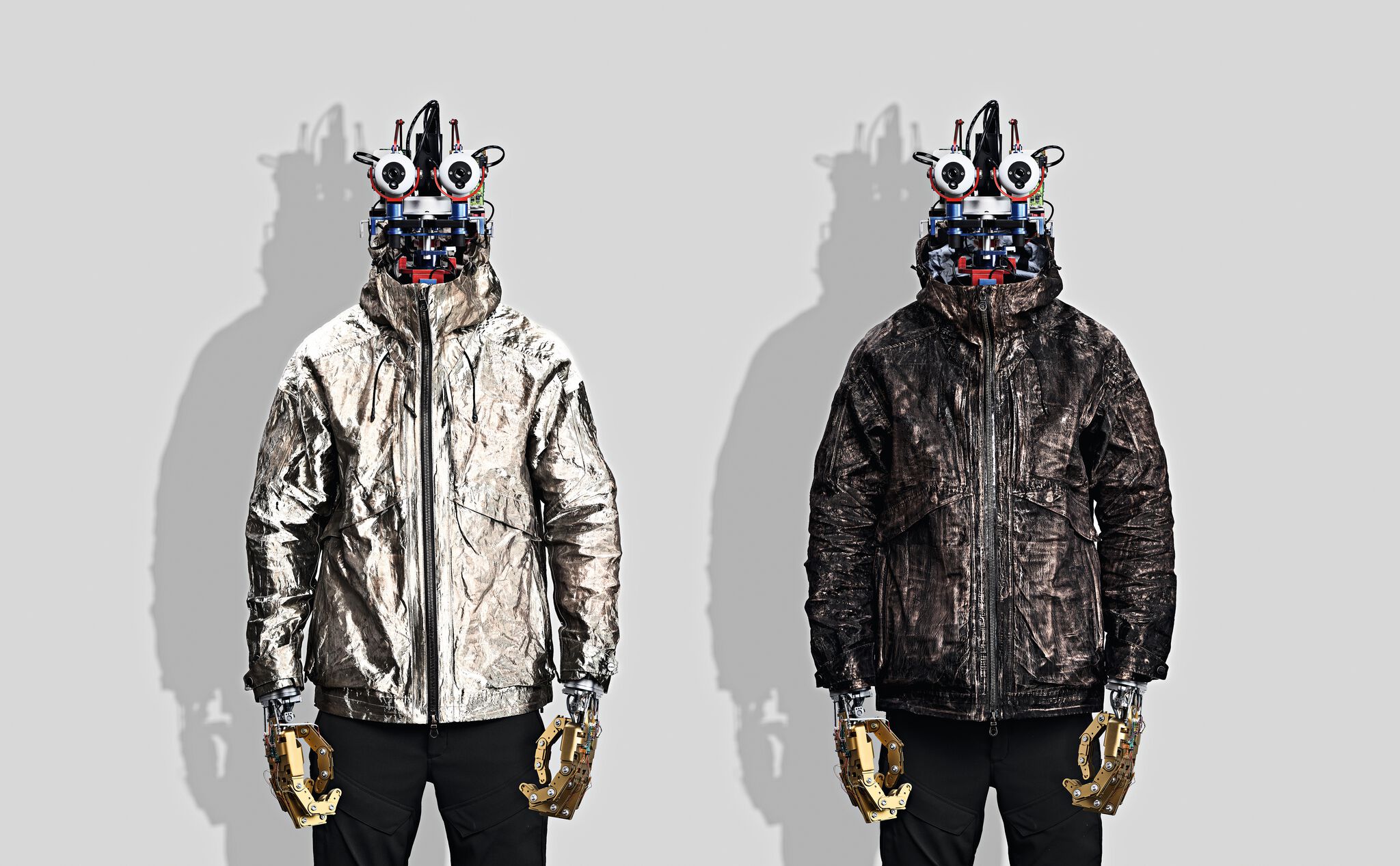
Easily said – but also done?
Right, then obviously your idea has to become real. Which is extremely difficult. Because there’s a reason no one’s ever designed these things. The approach we had at the start was: Can we make clothes that can do things that no other clothes have done before? And over the last six years, we got better at doing it.
You left your jobs in advertising for it. Is there a central theme that connects the dots between the two career paths?
Yes, definitely. I think one of the most critical points was my brother’s training in architecture. He went to Bartlett, a cutting-edge architecture school. There you don’t design buildings. You write fairytales or you create new bits of history. What he did get is this real training in materials. The other point was obviously advertising, meaning you can have the best idea in the world, but if no one else cares, it isn’t actually a good idea. That’s why today we have clothes that are very complicated to make with names like Apocalypse Jacket or 100 Year Hoodie or Solar Charged Jacket – names that are very simple but also very descriptive.
Do you think the world really needed another clothing brand?
When we first started, so many people told us that the world doesn’t need another one. Everything’s been done already. And you just go, “It isn’t true. It just isn’t true.” In the same way that when Elon Musk started Tesla, there were plenty of car brands, right? But it is possible to do something new. People often confuse market saturation and the ability to do something new. Market saturation can also mean there’s lots of people all doing the same thing.
You’re definitely doing things differently. Let’s take your Mars Jacket, it even has an anti-gravity pocket. But why should I buy the jacket for, say, my husband? He’s not going to Mars anytime soon. At least I hope not.
The Mars Jacket is an interesting one. One of the first two people wearing it was Christopher Nolan. Bjarke Ingels, the architect building the new Google headquarters, is wearing our Full Metal Jacket. We have rich lawyers as well as young designers, but the thing that connects our customers is they’re all fascinated with the future. And if you want to communicate that by your clothing, there isn’t a huge amount of choice. So, in a way, we kind of act as a communication mechanism.
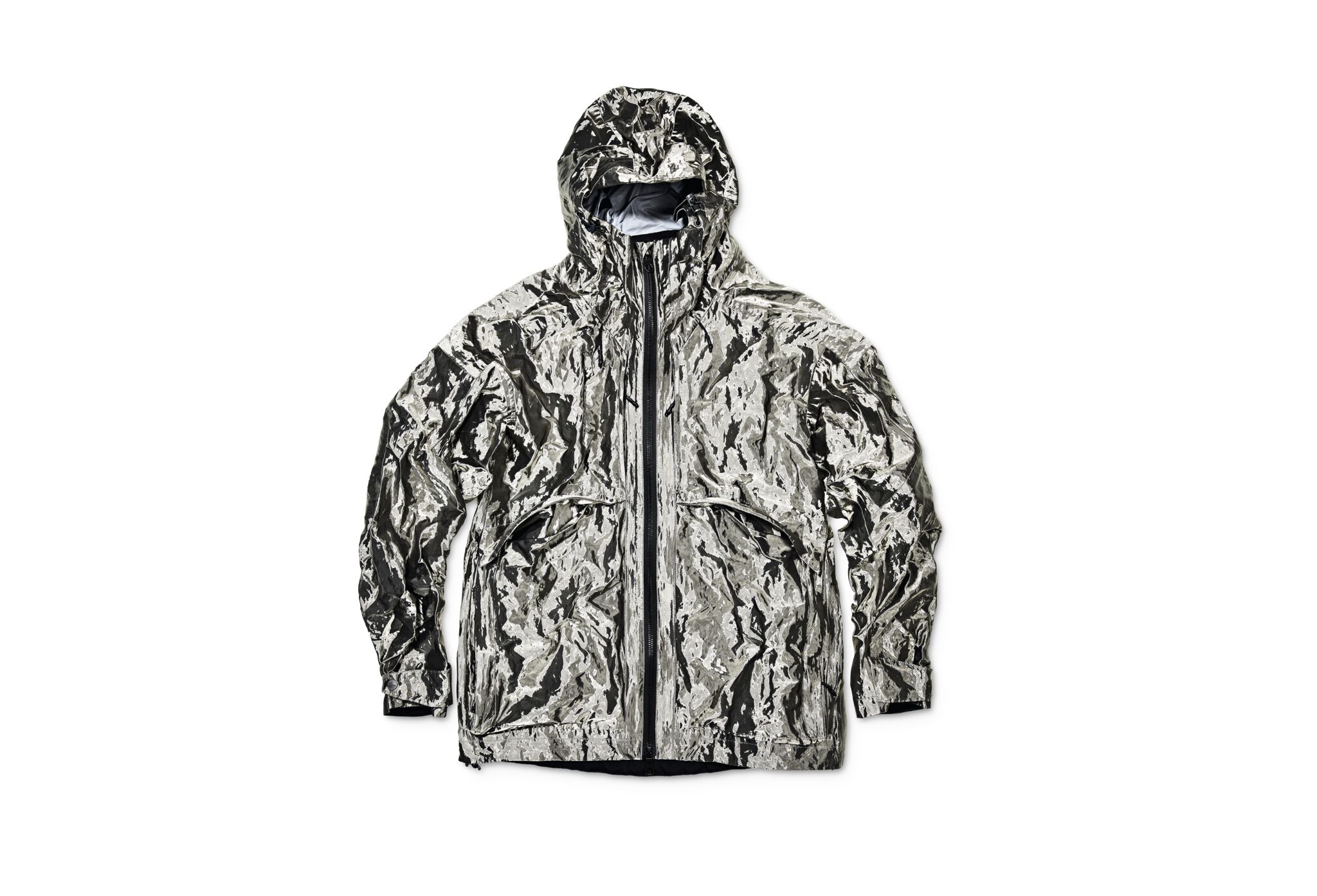
What drives you when designing?
The drive for me is: What will the next hundred years look like for humanity? And how do we design against it? Climate change, sustainability, space and health – those are the really big things that clothing can impact. So we design very specifically with that in mind.
Are you a futurist?
You’re not really allowed to call yourself a futurist, are you? Someone else has to call you that. But I’m interested in the future and in identifying what the next hundred years look like. And you know, you and I, neither of us are scientists. But we can definitely say the number of fires and floods will increase over the next hundred years, we will run out of resources, we will go – whether we want to or not – to space and colonize another planet and diseases will travel much faster around the earth. And once I know all of those things, I know what I have to design for. It’s a really interesting way of designing because it’s complex. This is why no one’s done it before.
How hard is it to innovate in the fashion industry?
It was helpful coming from outside the industry. Because we came into it not knowing how long anything took. We didn’t know how to make a prototype, to work with factories. Consequently, we didn’t set ourselves any of the normal time limits. Some of the things that we started working on five years ago will come out here and now. Normal clothing brands can’t do that. We launch when it’s ready, and sometimes this means we launch crazy winter jackets in August. Some of the pieces, like the Apocalypse Jacket, took a very, very long time.
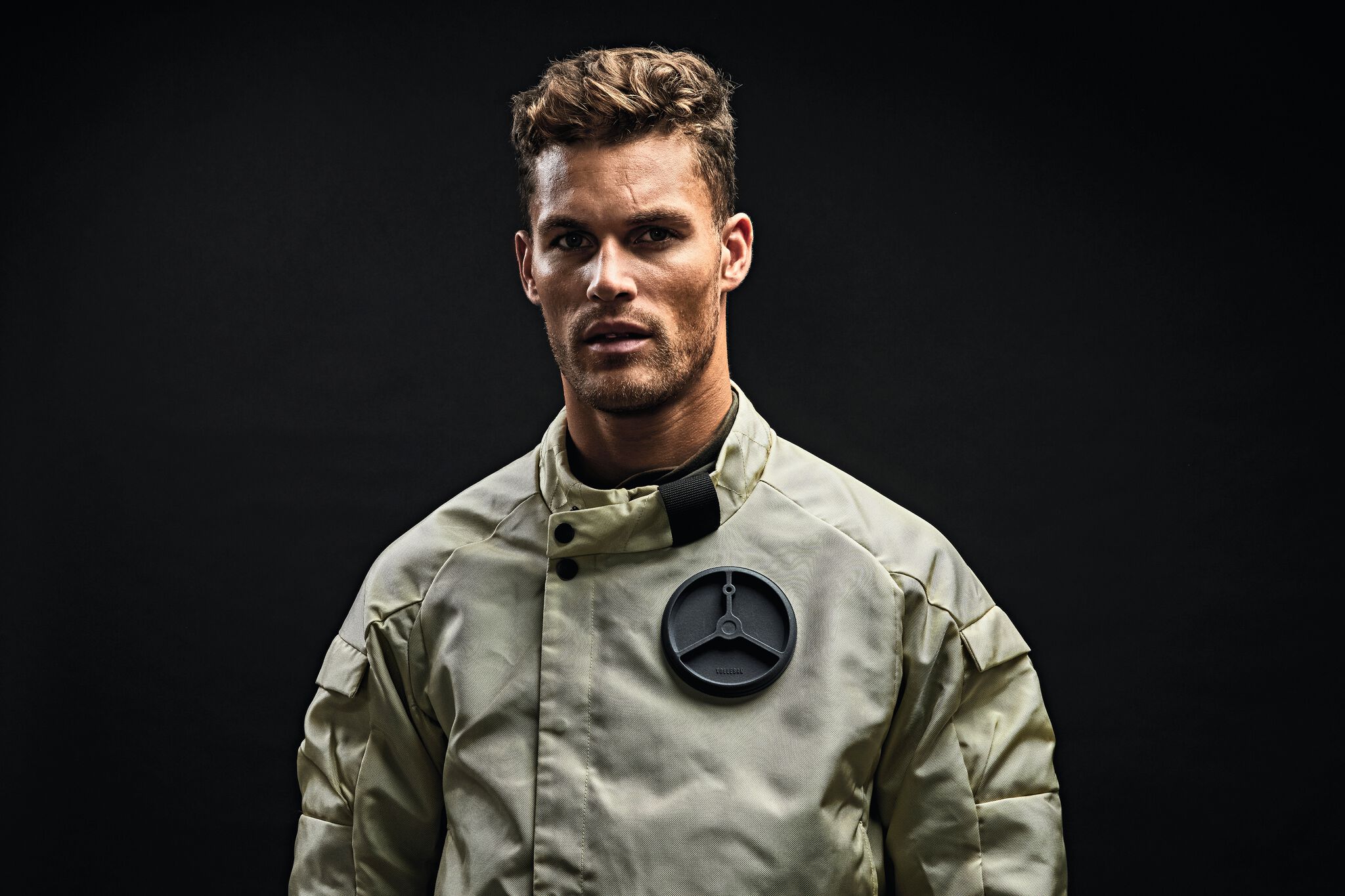
How do you finance this?
Let’s just say: At the moment we’re better at making clothes than we are at making money. [laughs] But it’s not particularly hard to build a business that makes money. It is quite hard to build a business that’s really fascinating and has done something new.
Obviously, you’re striving for an impact on society and sustainability.
We are designing for impact by showing what’s possible. And I think that’s a really interesting place to be. I think it’s a kind of philosophical impact, a kind of a soft influence on other designers.
How important is the fun factor – even in such serious messages like sustainability?
Bjarke Ingels has a phrase called “sustainable hedonism”. It is sustainability but it’s kind of joyful. I totally agree with his principle. So when we first started doing our properly sustainable thing, it was a T-shirt that you could bury in the ground. We said it could turn into worm food, and we made a video of worms eating the shirt. Just to make it a bit more tangible – and more fun.
What is sustainability to you?
There are three ways you can tackle sustainability right now: Clothes that outlive you. Clothes made from garbage streams. And clothes that you can bury at the end of their life because they’re made from nature. Those are the three things. And this is what we do.

What was your best idea?
The best idea we ever had is the Apocalypse Jacket. I love it so much because we had to think about how the world might end. And what was really beautiful is to have this crazy material that can resist lava and chemicals and fire and crazy stuff, but then inside of the jacket, you could store your whole life. We had conversations with our customers about the one object they could take to survive. It turned out it was their dog. So we built an Apocalypse Jacket for dogs, too.
Looking into the future: What is the dream headline you would love to read about your business one day?
“Elon Musk heads up to Mars wearing Vollebak.”
Interview: Patricia Jell for ramp
Photos: Vollebak
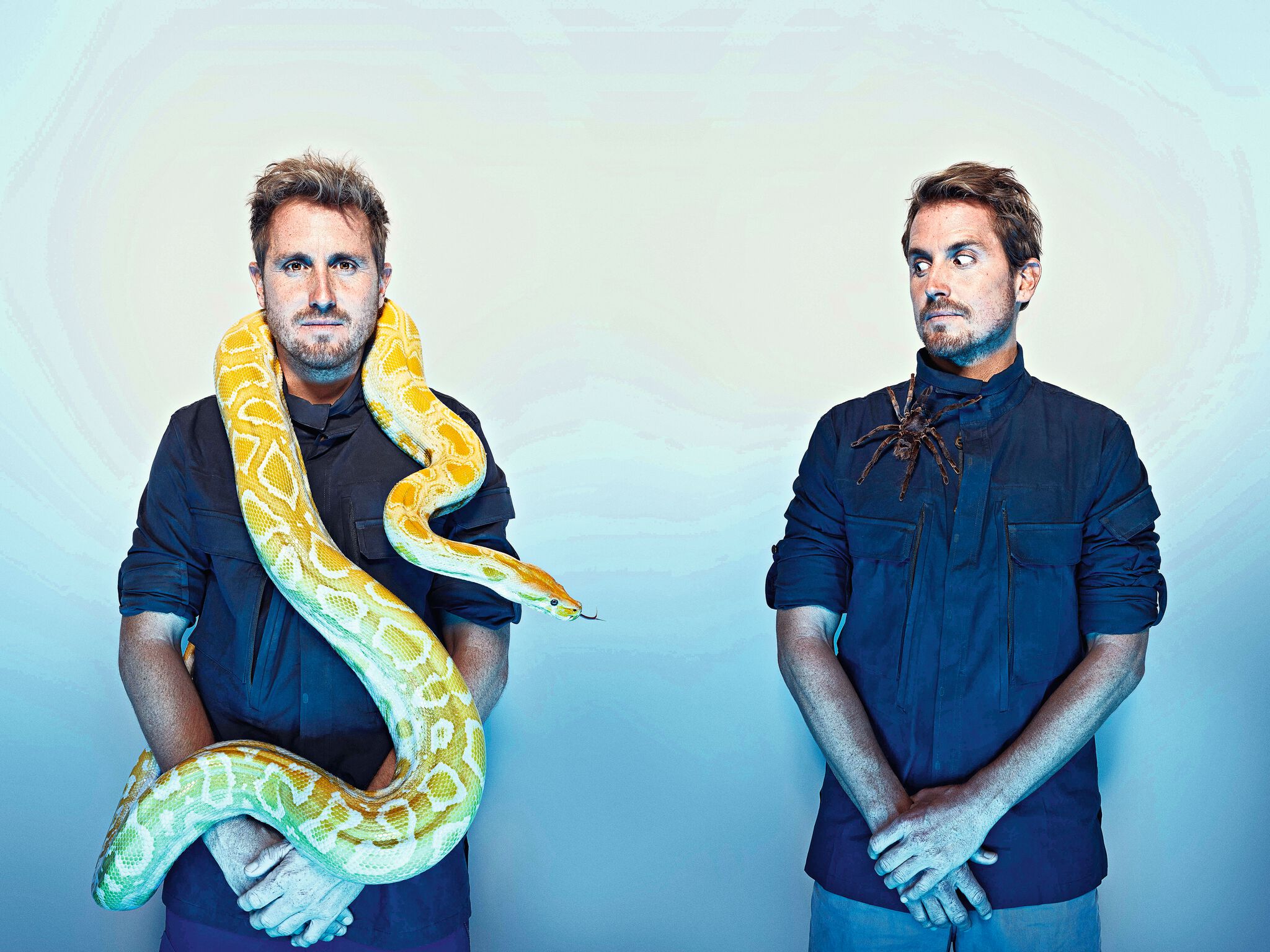
rampstyle #26
As a high-impact multimedia brand that takes an all-encompassing, end-to-end approach to publishing, ramp is an absolutely authentic expression of quality, integrity and excellence. Its trailblazing luxury magazines, recognized with numerous awards over the past 15 years, have been celebrated for their cool and unconventional, not to mention inspiring and pioneering style, since day one.
rampstyle is an exciting, trendsetting, lavish lifestyle magazine for men (and women) who know what they want and won’t settle for less. Everything we talk about with each other, our inspirations, our motives, our ambitions, the things that energize us to not only enjoy the world but to shape it according to our personal wishes and ideas.
Not always politically correct, with an exciting mix of topics including encounters, people and places, fashion and style, culture and architecture, food and leisure, cars and travel, gadgets, lifestyles and careers that are as inspiring and as lively as life itself.

